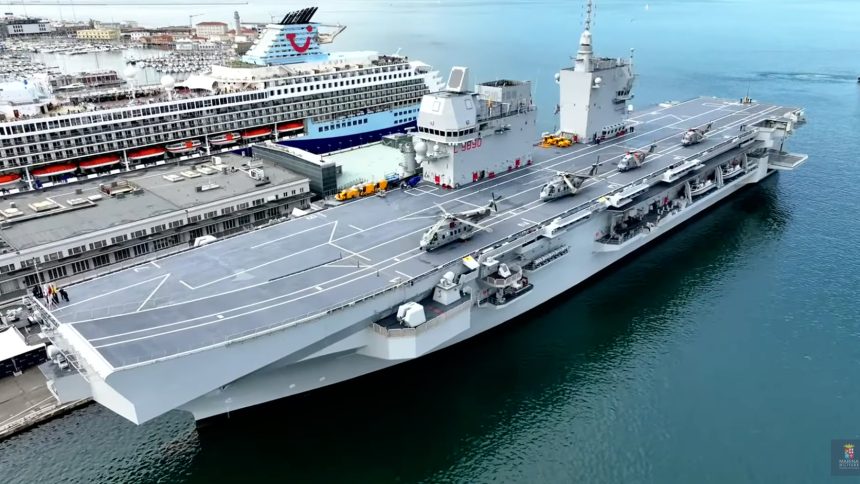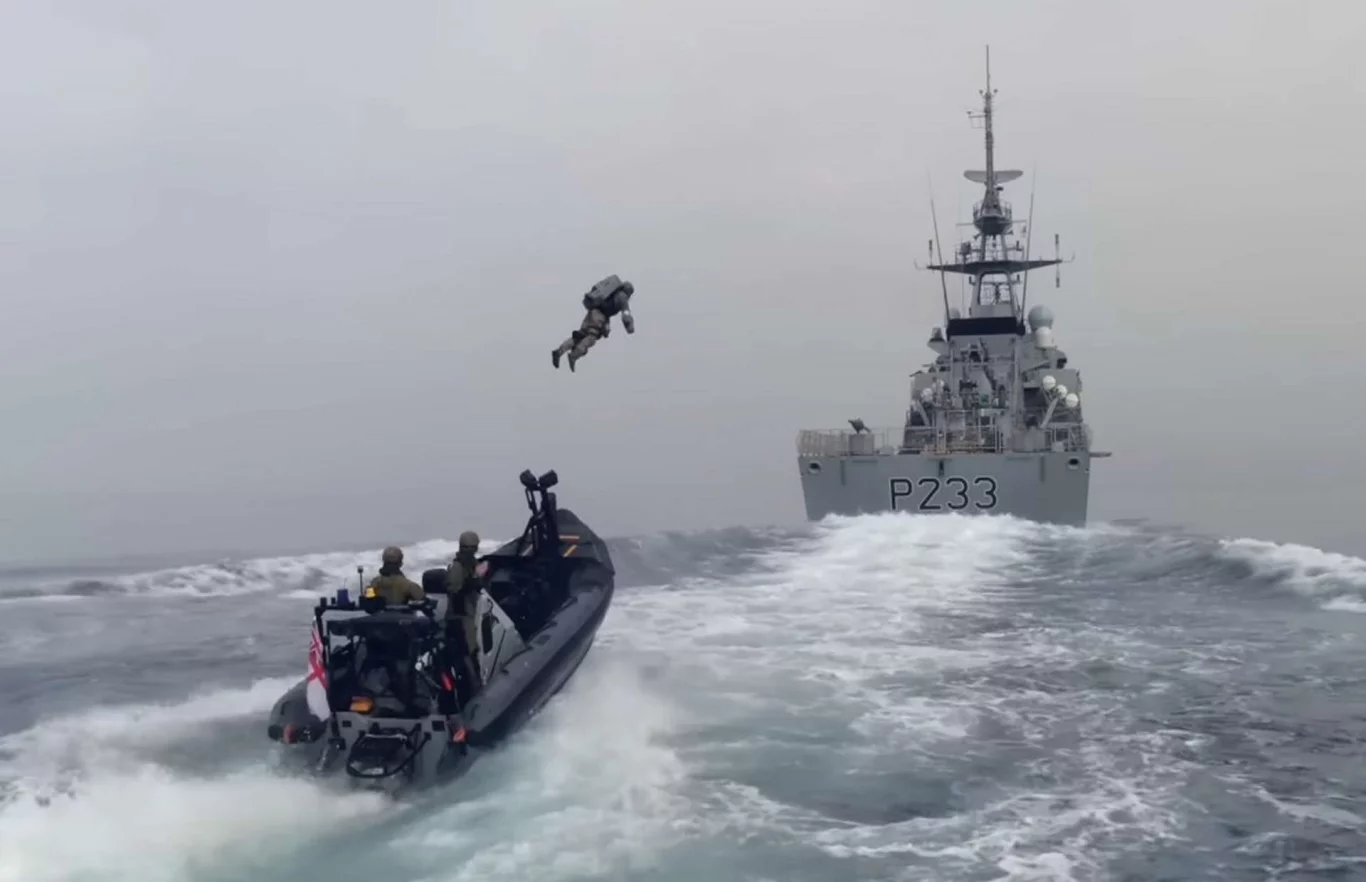On the crisp autumn morning of October 26, 2025, the port of Trieste—Italy’s historic gateway to the Adriatic—witnessed a spectacle that fused raw naval might with deep national emotion. At Molo Bersaglieri, the Italian Navy’s colossal new amphibious assault ship, LHD Trieste, officially received its Bandiera di Guerra (Battle Flag) in a ceremony drenched in symbolism, pageantry, and strategic significance. The event wasn’t just a military milestone; it was a deliberate act of historical resonance, timed to coincide with the 71st anniversary of Trieste’s return to Italian sovereignty on October 26, 1954—a date etched into the national psyche after years of post-World War II uncertainty.
For the people of Trieste, the sight of a 33,000-ton warship bearing their city’s name, flying the tricolor high above a flight deck longer than two football fields, stirred emotions few other events could match. Mayor Roberto Dipiazza, who has helmed the city for a quarter-century, didn’t hide his tears. “In 25 years as mayor, I’ve lived through earthquakes, triumphs, and tragedies,” he told the crowd. “But watching Trieste glide into our harbor with the Italian flag snapping in the breeze, knowing it will carry our name to every corner of the globe—this is the most moving moment of them all.”
The Bandiera di Guerra isn’t just cloth and stitching. Under Italian law, its presentation transforms a steel hull into a sovereign extension of the Republic. From the moment the flag was handed to Captain Francesco Marzi, the ship ceased to be a mere vessel and became a floating fortress authorized to project Italian power, protect Italian interests, and—if necessary—deliver Italian justice on the high seas.
To understand why October 26 matters, rewind to 1945. After Nazi occupation, Yugoslav partisans seized Trieste. The Allies intervened, creating the Free Territory of Trieste—split into Zone A (Anglo-American control, including the city) and Zone B (Yugoslav control). For nearly a decade, Trieste hung in geopolitical limbo, its Italian identity under threat. The 1954 London Memorandum finally settled the dispute: Zone A returned to Italy, Zone B to Yugoslavia. On October 26, 1954, Italian troops marched back into Piazza dell’Unità d’Italia to jubilant crowds.
Seventy-one years later, on that same square, hundreds gathered beneath giant screens to watch the LHD Trieste raise its battle flag in perfect synchronization with a civilian ceremony ashore. Four helicopters—two lumbering EH-101 Merlins and two sleek SH-90s—sat poised on the flight deck like mechanical sentinels as rifle volleys cracked through the air. The message was unmistakable: Trieste the city and Trieste the ship are now eternally bound.
Let’s talk hardware. Delivered to the Navy in December 2024 after years of construction at Fincantieri’s Castellammare di Stabia shipyard, the LHD Trieste is a 245-meter-long, 33,000-ton behemoth—the largest warship Italy has floated since the battleships of World War II. Compare that to the legendary carrier Cavour (244 meters, 27,000 tons), and you grasp the leap in ambition.
The ship boasts a 230-meter flight deck with room for up to 12 helicopters or a mix of helicopters and F-35B STOVL jets (future integration planned). Its hangar can swallow 14 helicopters or a combination of rotary and fixed-wing assets. A floodable well deck accommodates four LCAC hovercraft or landing craft, enabling rapid amphibious assaults. It can carry up to 1,000 marines plus vehicles, including main battle tanks, and features a full Level-2 medical facility with operating theaters—ideal for disaster relief. Command suites provide flagship-grade C4I for commanding joint NATO task forces.
Defense Minister Guido Crosetto didn’t mince words: “Very few navies in the world operate more than one aircraft carrier. Italy now does. The Trieste confirms our Navy as a global top-tier force in efficiency, deterrence, and multi-domain capability.”
The guest list read like a who’s-who of Italian power. Laura Mattarella, daughter of President Sergio Mattarella and the ship’s official godmother, stood front and center. Ministers Luca Ciriani (Parliamentary Relations) and Carlo Nordio (Justice) flanked Crosetto. Undersecretary Sandra Savino represented the Finance Ministry.
As the mayor intoned the ritual words—“Commander, on behalf of the City of Trieste, I present you the Battle Flag of the ship Trieste”—Captain Marzi accepted the banner with a crisp salute. The flag snapped up the mast. The helicopters’ rotors glinted in the sun. And somewhere in the crowd, an elderly veteran who remembered 1954 wiped away a tear.
Commissioned in late 2024, Trieste had already begun sea trials and crew familiarization. But the battle flag ceremony is the legal and spiritual christening. Until this moment, the ship was technically “delivered” but not “alive” in the eyes of tradition. Now, she’s the flagship of Italy’s Amphibious Task Group, a perfect complement to Cavour’s carrier strike group.
Her roles span power projection (launching marines onto hostile shores under air cover), humanitarian response (delivering thousands of tons of aid after earthquakes or tsunamis), maritime security (patrolling chokepoints, interdicting traffickers, escorting merchant convoys), and diplomatic muscle (showing the flag in the Indo-Pacific alongside allies). The Navy calls her “a symbol of national technological excellence.” Fincantieri’s engineers call her “the most complex warship ever built in Italy.” Sailors just call her home.
In a nod to transparency, the entire ceremony streamed live on the Italian Navy’s YouTube channel, racking up tens of thousands of views within hours. From sailors’ families in Naples to expats in New York, Italians worldwide watched their newest leviathan come to life.
October 26, 2025, wasn’t just another naval ceremony. It was Italy flexing hard power and soft sentiment in equal measure. A city reclaimed in 1954 now sails the world in steel and pride. A Navy once limited to coastal defense now commands dual-carrier capability few nations can match. And a 33,000-ton warship just became the beating heart of Italy’s maritime renaissance.
The LHD Trieste isn’t just bigger than anything Italy has launched since Mussolini’s battleships. She’s proof that Italy is back—bolder, stronger, and ready to lead.




